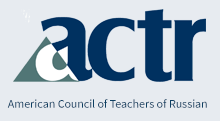Russian Language Journal
Keywords
programs, languages, academic institutions, foreign language education
Abstract
Since the global economic downturn in 2008, few programs in languages other than English in the U.S. have managed to escape the chilling effect of shrinking budgets on academic institutions. With fewer financial resources available to support the educational missions of language departments, many programs nationally have either devolved into smaller, leaner academic units at best, or at worst, have been cancelled entirely. These dire economic times, coupled with a new incarnation of culture wars aimed at the very heart of the relevance and value of a liberal arts education, have compelled some university administrators and program directors to seek innovative ways to do more in the classroom with fewer resources in order to keep their language programs viable, or prevent them from being cut entirely. While radical curricular and programmatic change may smack of desperation and might seem to be succeeding only in staving off the apparent inevitable decline of foreign language study in the U.S., at least one pedagogically significant development is emerging from much of this curricular “perestrojka”: a rethinking – a reimagining – of earlier intensive methods of instruction for our language programs that has informed the creation of an innovative model of instruction and assessment designed to revitalize foreign language study.
Recommended Citation
Garza, T. J. (2013). Keeping it Real: Intensive Instruction and the Future of Russian Language and Culture in U.S. Universities. Russian Language Journal, 63(1). https://doi.org/10.70163/0036-0252.1137

